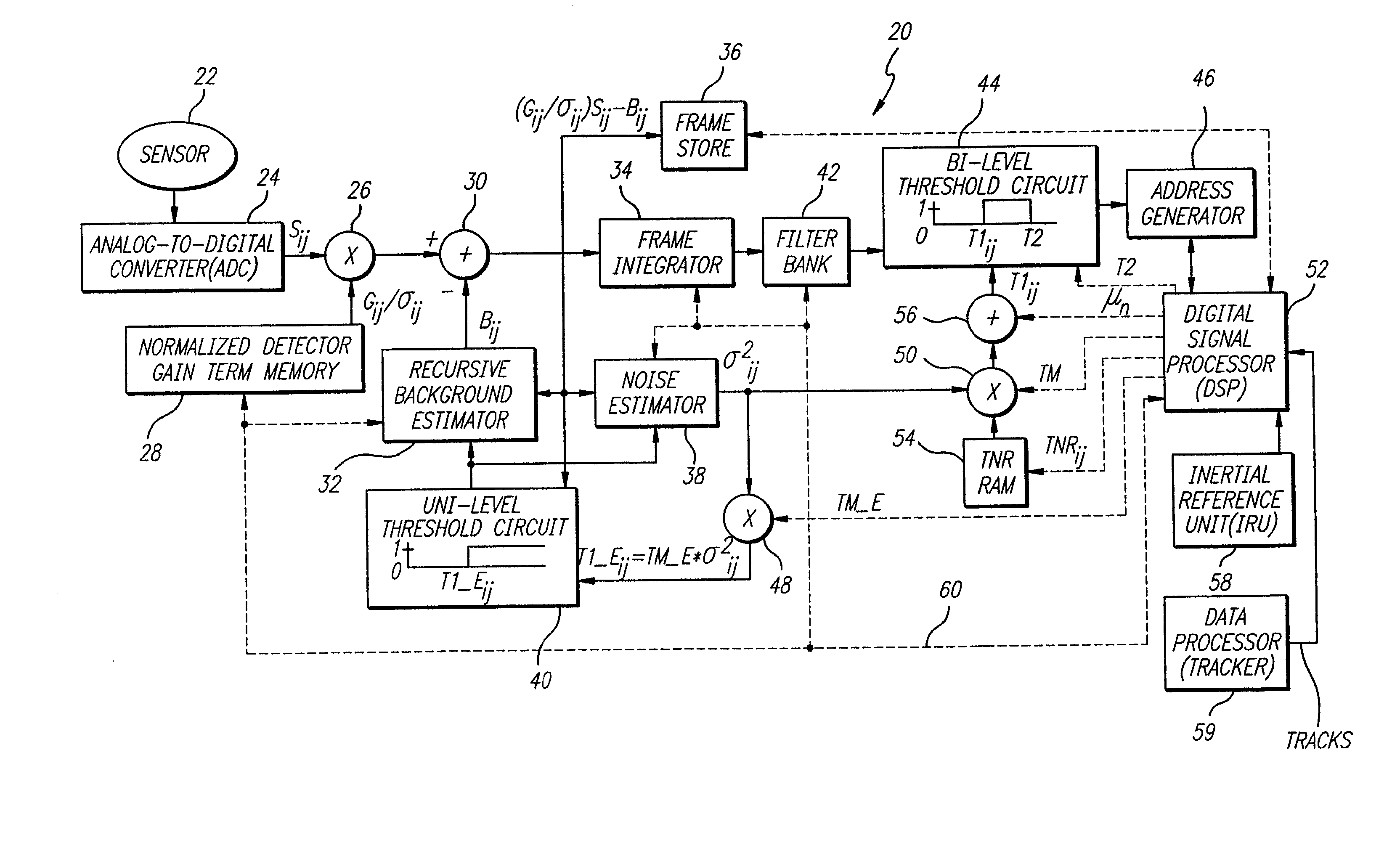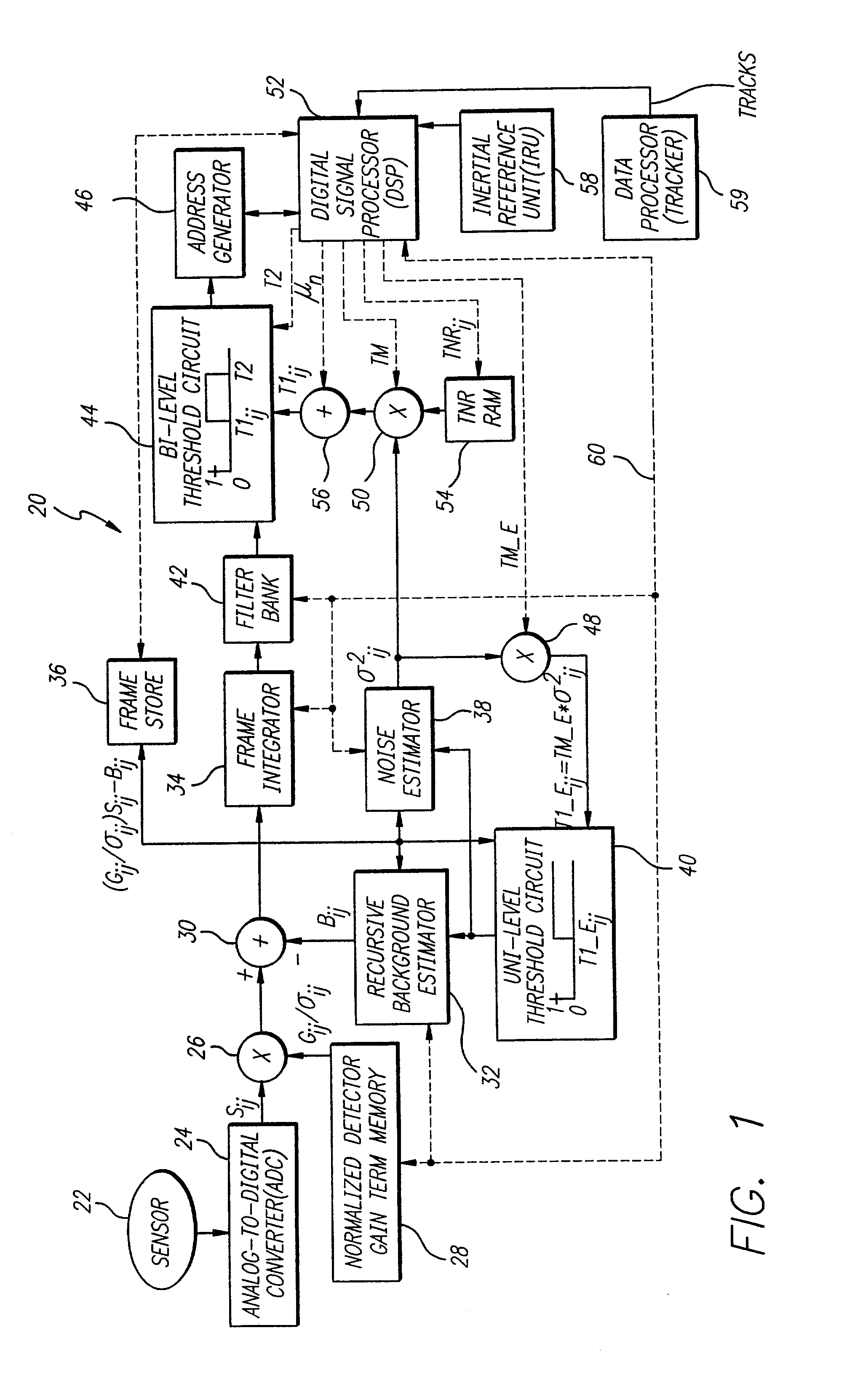Accurate target detection system
a target detection and accurate technology, applied in the field of target detection systems, can solve the problems of increasing the probability that a target will go undetected, reducing the probability, and inefficient use of a single threshold range for all detectors in the array
- Summary
- Abstract
- Description
- Claims
- Application Information
AI Technical Summary
Problems solved by technology
Method used
Image
Examples
Embodiment Construction
[0025] While the present invention is described herein with reference to illustrative embodiments for particular applications, it should be understood that the invention is not limited thereto. Those having ordinary skill in the art and access to the teachings provided herein will recognize additional modifications, applications, and embodiments within the scope thereof and additional fields in which the present invention would be of significant utility.
[0026] FIG. 1 is a diagram of a target detection system 20 constructed in accordance with the teachings of the present invention. The target detection system 20 includes a sensor 22, the output of which is connected to a analog-to-digital converter (ADC) 24. An output of the ADC 24 is connected to a first input of a first multiplier 26. A second input of the first multiplier 26 is connected to an output of a normalized detector gain term memory 28. An output of the first multiplier 26 is connected to a positive terminal of a subtract...
PUM
 Login to View More
Login to View More Abstract
Description
Claims
Application Information
 Login to View More
Login to View More - R&D
- Intellectual Property
- Life Sciences
- Materials
- Tech Scout
- Unparalleled Data Quality
- Higher Quality Content
- 60% Fewer Hallucinations
Browse by: Latest US Patents, China's latest patents, Technical Efficacy Thesaurus, Application Domain, Technology Topic, Popular Technical Reports.
© 2025 PatSnap. All rights reserved.Legal|Privacy policy|Modern Slavery Act Transparency Statement|Sitemap|About US| Contact US: help@patsnap.com



